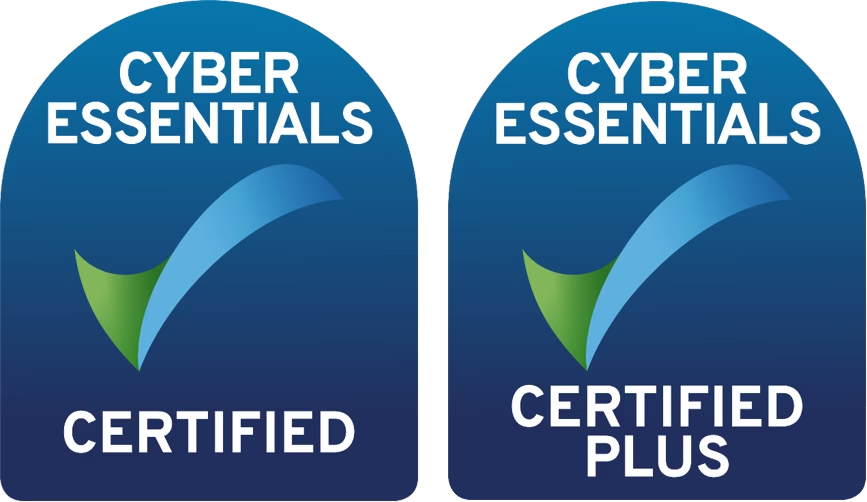The rise of remote work has increased the cyber security risks for SMEs in 2023.
The COVID-19 pandemic has forced many businesses to adopt remote work arrangements, and this has led to an increase in cyber security risks for small and medium-sized enterprises (SMEs).
There are a number of reasons why remote work can increase cyber security risks.
The main reason is remote workers are often using their own devices and networks, which may not be as secure as the company’s own network.
As a result of this risks, SMEs need to take cyber security risks seriously in 2023.

Remote Working Cyber Security Risks Statistics 2023 – Did you Know:
46% of all cyber security risks breaches impact businesses with fewer than 1,000 employees.
This means that small businesses are just as likely to be targeted by cyber attacks as large enterprises.
In fact, a recent study found that 46% of all cyber security risks breaches impact businesses with fewer than 1,000 employees.
61% of SMBs were the target of a Cyberattack in 2021.
This is a significant increase from the previous year, when only 53% of SMBs were targeted by cyber attacks.
This trend is likely to continue in the years to come, as cyber criminals become more sophisticated and target smaller businesses that they believe are less likely to have robust security measures in place.
Employees of small businesses experience 350% more social engineering attacks than those at larger enterprises.
Social engineering attacks are a type of cyber attack that relies on human interaction to trick victims into revealing sensitive information or taking actions that are harmful to the victim or the victim’s organization.
Employees of small businesses are more likely to be targeted by social engineering attacks because they may not be as familiar with the latest security threats and may be more likely to trust unsolicited emails or phone calls from unknown senders.
50% of SMBs report that it took 24 hours or longer to recover from an attack.
The average cost of a data breach for a small business is $25,000. However, the cost of a data breach can be much higher, depending on the severity of the breach and the length of time it takes to recover.
A recent study found that 50% of SMBs report that it took 24 hours or longer to recover from a data breach. This can have a significant impact on a small business’s bottom line, as well as its ability to operate.
51% of small businesses that fall victim to ransomware pay the money.
Ransomware is a type of cyber attack that encrypts a victim’s data and demands a ransom payment in order to decrypt it.
A recent study found that 51% of small businesses that fall victim to ransomware pay the ransom.
This is a risky proposition, as there is no guarantee that the cyber criminals will actually decrypt the data after the ransom is paid.
75% of SMBs could not continue operating if they were hit with ransomware.
Ransomware attacks can be devastating for small businesses. A recent study found that 75% of SMBs could not continue operating if they were hit with ransomware.
This is because small businesses often do not have the resources to recover from a data breach, especially if the data is encrypted and cannot be accessed.
Just 17% of small businesses have a cyber security risks plan in place.
Despite the risks, many small businesses do not have a cyber security risks plan in place.
A recent study found that just 17% of small businesses have a cyber security risks plan in place. This is a serious problem, as it leaves small businesses vulnerable to cyber attacks.
51% of small businesses have no cybersecurity measures in place at all.
The statistics are clear: small businesses are at risk of cyber attacks. And yet, many small businesses are not taking the necessary steps to protect themselves.
A recent study found that 51% of small businesses have no cybersecurity measures in place at all.
This is a dangerous mistake, as it leaves small businesses vulnerable to cyber attacks that can cost them time, money, and even their business.

If you own a small business, it is important to take steps to protect yourself from cyber attacks.
There are a number of steps that SMEs can take to protect themselves from cyber attacks, including:
Providing remote workers with secure devices and networks.
Training remote workers on cyber security risks best practices.
Using strong passwords and multi-factor authentication (MFA).
Keeping software up to date.
Implementing a robust security incident response plan specifically for remote workers such as monitoring of devices using Watchguard tools.
In the past, businesses could rely on the physical security of their offices to protect their data. However, with the rise of remote work, businesses need to take a more proactive approach to cyber security.
The Importance of a Security Incident Response Plan
One of the most important steps that businesses can take is to implement a robust security incident response plan.
This plan should outline the steps that the business will take in the event of a cyber attack.
The plan should include steps for identifying and containing the attack, as well as steps for notifying affected customers and employees.
A well-defined security incident response plan can help a business to minimize the impact of a security incident. By having a plan in place, businesses can quickly identify and respond to incidents, which can help to protect their data, their systems, and their reputation.
Here are some of the key benefits of having a security incident response plan:
Reduced downtime: A well-executed incident response plan can help to reduce the amount of downtime that a business experiences as a result of a security incident.
Minimized financial losses: A security incident can have a significant financial impact on a business. By having a plan in place, businesses can minimize the financial losses associated with a security incident.
Protected reputation: A security incident can damage a business’s reputation. By having a plan in place, businesses can protect their reputation and minimize the negative impact of a security incident.
Watchguard: A Comprehensive Security Solution for Remote Workers
Another important step that businesses can take is to monitor the devices of their remote workers.
This can be done using a variety of tools, such as Watchguard tools. These tools can help businesses to identify and respond to threats before they cause damage.
Our solutions offer a number of features that can help to protect remote workers, including:
Endpoint security: Watchguard’s endpoint security solutions can help to protect remote workers’ devices from malware, ransomware, and other threats.
Remote access security: Watchguard’s remote access security solutions can help to protect businesses from unauthorized access to their networks by remote workers.
Data loss prevention (DLP): Watchguard’s DLP solutions can help to prevent the unauthorized disclosure of sensitive data by remote workers.
Cloud security: Watchguard’s cloud security solutions can help to protect businesses from threats that target cloud-based applications and data.
Watchguard Tools can help reduce the cost of cyber attacks.
Improve the reputation of the business.
Protect the privacy of customers and employees.
Ensure the continuity of business operations.
Overall, implementing a robust security incident response plan for remote workers is a critical step in protecting a business’s cyber security risks.
If you are concerned about the security of your remote workers, Speedster IT can help.
Our Watchguard Gold engineers have the expertise and experience to help you implement a robust security incident response plan and monitor the devices of your remote workers.
We can also provide your business with training on cyber security risks best practices for remote workers.
To learn more about how Speedster IT can help you protect your remote workers, please contact us today.
Contact us to Schedule your Free Consultation!
With over 15 years at Speedster IT, I’ve built a career around helping businesses navigate the evolving world of technology. I publish all the content for the IT Support London Blog and Cyber Security Blog, where I share practical insights on infrastructure upgrades, cybersecurity trends, and smart IT strategies for growing companies.
